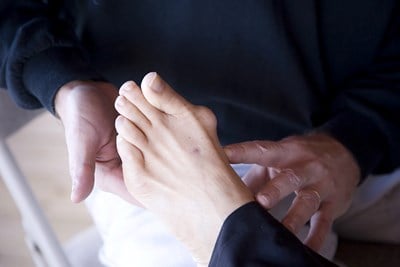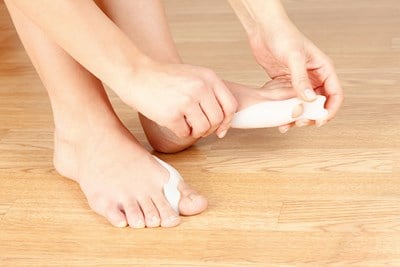A bunion is a bony bump that develops at the base of your big toe, causing it to point towards your second toe—it’s considered a foot deformity that consists of both bone and soft tissue. Bunions can be painful, but symptoms can often be treated with conservative methods. However, if conservative methods don’t work, surgery is needed to relieve your pain. Here is everything you need to know about bunion surgery.
Candidates for Surgery
If you meet any of the following requirements you’re a candidate for bunion surgery:
- Your pain limits your everyday activities.
- Walking more than a few blocks causes you severe foot pain.
- Medication and rest don’t reduce swelling of your big toe.
- Your toe is no longer flexible. For example, you can’t bend or straighten it.
Types of Bunion Surgery
The three most common types of bunion surgery are:
- Osteotomy: This involves cutting your big toe joint and realigning it to a normal position.
- Exostectomy: The bunion is removed from your joint—without alignment.
- Arthrodesis: To correct the affected toe, the damaged joint is replaced with screws or metal plates.
Before the Surgery
The type of surgery you’ll need depends on the cause of the bunion and its size. Surgery is an outpatient procedure, which means you can go home the same day—usually within a few hours.
You may need to undergo tests before the surgery in order to determine your overall health. These will include an X-ray of your lungs, a cardiogram to check heart function, and urine and blood tests that’ll be tested for other underlying illnesses.
The Procedure
Most patients will be given a local anesthetic, known as a nerve or ankle block, which numbs your foot. However, you’ll remain awake for the procedure. Once you’re numb, the bunion is removed and other repairs to your foot are made by your surgeon.
Recovery
Normal recovery will take about six to eight weeks, but a full recovery can sometimes take up to six months. You’ll wear a surgical boot for the first two weeks after surgery, which will then be replaced with a brace to support your foot while it heals—you’ll use crutches because you won’t be able to put weight on your foot.
To reduce inflammation and speed up healing, ice your foot and toe and keep the foot elevated as often as possible. After a couple weeks, you’ll be able to drive. It’s normal for your foot to remain swollen for several months after the surgery. You should wear shoes with plenty of room to help relieve your pain—don’t wear high heels for the first six months. If needed, your doctor may suggest physical therapy so you can learn strengthening exercises for your foot and lower leg.
Prevent future bunions by wearing proper, comfortable, wide shoes that have roomy toe boxes; avoid tight, narrow shoes that crowd your toes.



